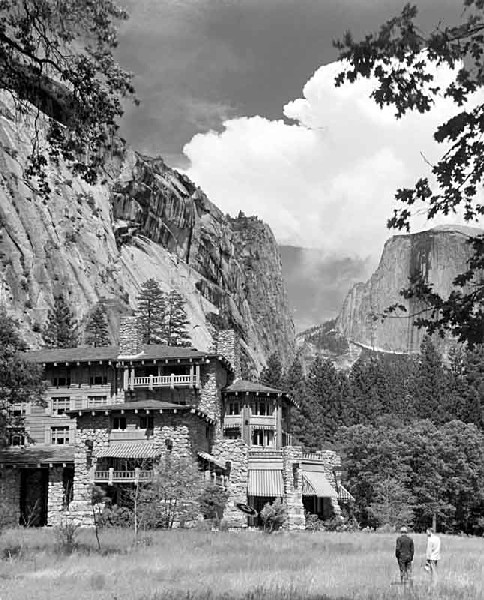The Venice Charter
 Tuesday, May 4, 2010 at 10:46AM
Tuesday, May 4, 2010 at 10:46AM
 The Ahwahnee Hotel
The Ahwahnee Hotel
Prime turning points in a discipline, a profession, or a movement are often named after the place where an ad hoc group comes together and some how develops the core principles that guide the group, its followers, and essentially controls its future. Two that I always liked are the Ahwahnee Principles which guide the activities of "Livable Communities" and the Dublin Core which prescribes the metadata semantics for web based resources. The Ahwahnee Hotel is the perfect meeting site at Yosemite National Park and Dublin, Ohio is the location of OCLC, a prime influencer in information cataloging. In Historic Preservation it is the Venice Charter.
To understand the mores of Preservationists we really need to understand some of the profession's drivers and how they came to be codified. At first I was going to begin with the Secretary of the Interior's Standards for Historic Preservation but we really need to go back a step first. Please note that my goal here is to put historic preservation in context not to write the definiitve history of an international movement.
So, where to begin? The 1930s with its economic disruption saw an increased value in the built environment as the funding for new structures became difficult to acquire. In this country the federal government in an attempt to employ millions created programs which were suited to many professions. Researchers and librarians benefited from the American Imprints Inventory. Murals were created for post office walls. The Civilian Conservation Corps worked on infastructure that benefited outdoor recreation. The Historic Buildings Survey provided extensive photographic documentation. These and other programs provided base line information that was to become essential to preservationists later.
In 1931 on board ship cruising from Marseilles to Athens the participants of the 1st International Congress of Architects and Technicians of Historic Monuments drafted the Athens Charter setting forth principles for work on historic structures. World War II ended this focus on the current built environment. The destruction caused by the War and the post-war emphasis on replacing old with new changed the value of the historic. In 1964 the 2nd International Congress (this time meeting in Venice) drafted the Venice Charter detailing the principles for conservation, restoration, historic sites, excavation, and publications. With the assistance of the National Trust for Historic Preservation and with the increasing desire to stop the wholesale destruction of the historic environment Congress passed the National Historic Preservation Act in 1966. This Act had several outcomes including the Secretary of the Interior's Standards, the creation of the National Register of Histoic Places, and the protection of historic properties from actions by federal agencies. Each needs to be understood, at least a little, if you are going to be an effective preservationist. All of this puts actions that we take to work on historic buildings in a context that makes our actions finally seem reasonable.

Reader Comments